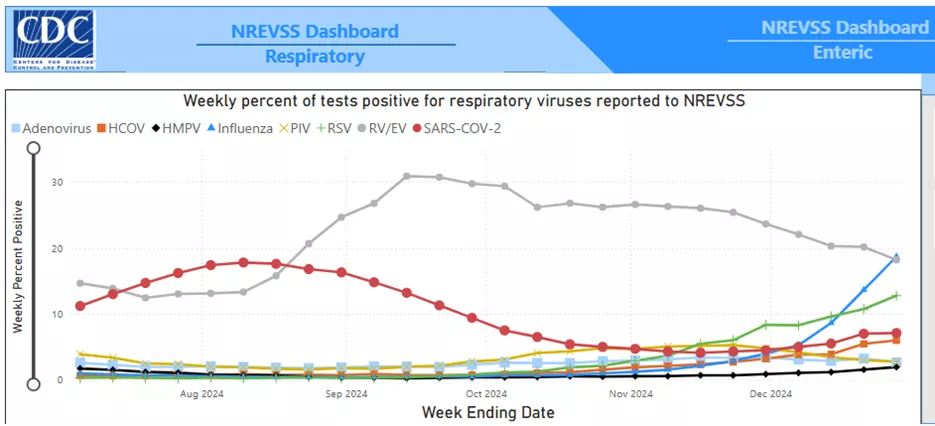Human Metapneumovirus: A Familiar Seasonal Virus
Syra Madad and Gavin Harris write about human metapneumovirus (hMPV) as respiratory illnesses surge during the northern hemisphere's winter season.
Syra Madad and Gavin Harris write about human metapneumovirus (hMPV) as respiratory illnesses surge during the northern hemisphere's winter season.
As respiratory illnesses surge during the northern hemisphere's winter season, concerns about human metapneumovirus (hMPV) have emerged, particularly following reports from China. However, hMPV is neither a new virus nor an unexpected seasonal presence. Here are five things you should know:
hMPV is a respiratory virus first identified in 2001, though research suggests it has circulated for decades. By the age of five, most children have been exposed to hMPV at least once. The virus, which causes upper and lower respiratory tract infections, is part of the Pneumoviridae family and closely related to RSV.
Symptoms:
In healthy individuals, hMPV often manifests as a common cold, resolving within a few days. However, it can cause severe illness, including bronchitis or pneumonia, in young children, older adults, and those with weakened immune systems.
Transmission:
The incubation period typically ranges from 3 to 6 days.
The increase in hMPV cases, particularly in China, aligns with the expected seasonal surge in respiratory illnesses typical during winter months in the Northern Hemisphere. According to the World Health Organization, surveillance data from China covering the period up to December 29, 2024, indicates this rise in hMPV along with other acute respiratory infections, including seasonal influenza, rhinovirus, and RSV, particularly in the northern provinces.
As stated by the WHO outbreak news report, influenza remains the most commonly detected respiratory pathogen in China, with hMPV and other viruses contributing to the usual co-circulation of multiple pathogens during this time of year. Improved global surveillance and diagnostic tools have heightened awareness of hMPV‘s role in respiratory infections, making its seasonal impact more visible.
Chinese health authorities report that the healthcare system is not overwhelmed, and there have been no emergency declarations or unusual outbreak patterns. While the co-circulation of multiple respiratory pathogens can occasionally strain healthcare systems due to higher patient volumes, current trends in China are within expected ranges. WHO continues to monitor the situation closely and has confirmed that these increases do not signal a public health emergency.
For the United States, hMPV also continues to follow the typical seasonal pattern with influenza, rhinovirus and enterovirus most commonly affecting people with acute respiratory infections along with other circulating respiratory viruses.

Preventing hMPV mirrors strategies for other respiratory illnesses:
While no vaccine or specific antiviral treatment exists for hMPV, symptoms can often be managed with rest, hydration, and over-the-counter medications. Severe cases, especially in high-risk individuals, may require medical attention.
Seek medical care if you notice warning signs such as:
hMPV is not a new threat but a well-known virus that has circulated for decades. Its seasonal rise highlights the importance of maintaining respiratory etiquette and personal precautions, including staying current with recommended vaccinations, during respiratory illness seasons. Staying informed and practicing common-sense health measures remain our most effective defense.
Statements and views expressed in this commentary are solely those of the authors and do not imply endorsement by Harvard University, the Harvard Kennedy School, or the Belfer Center for Science and International Affairs.
Madad, Syra and Harris, Gavin. “Human Metapneumovirus: A Familiar Seasonal Virus.” January 10, 2025